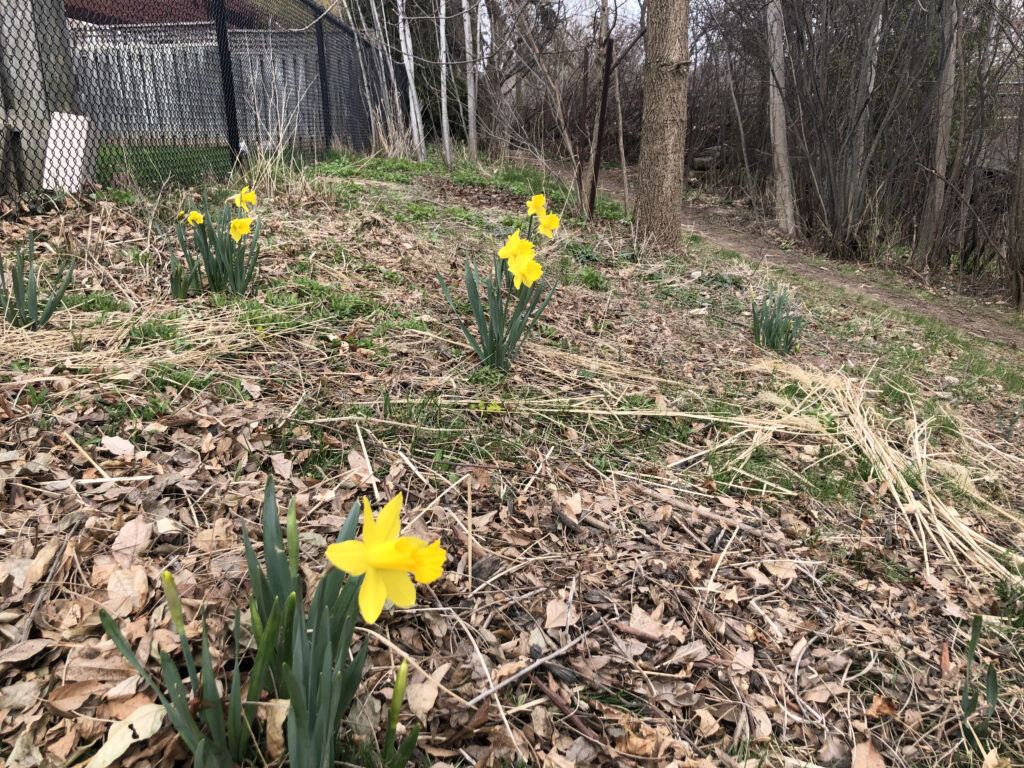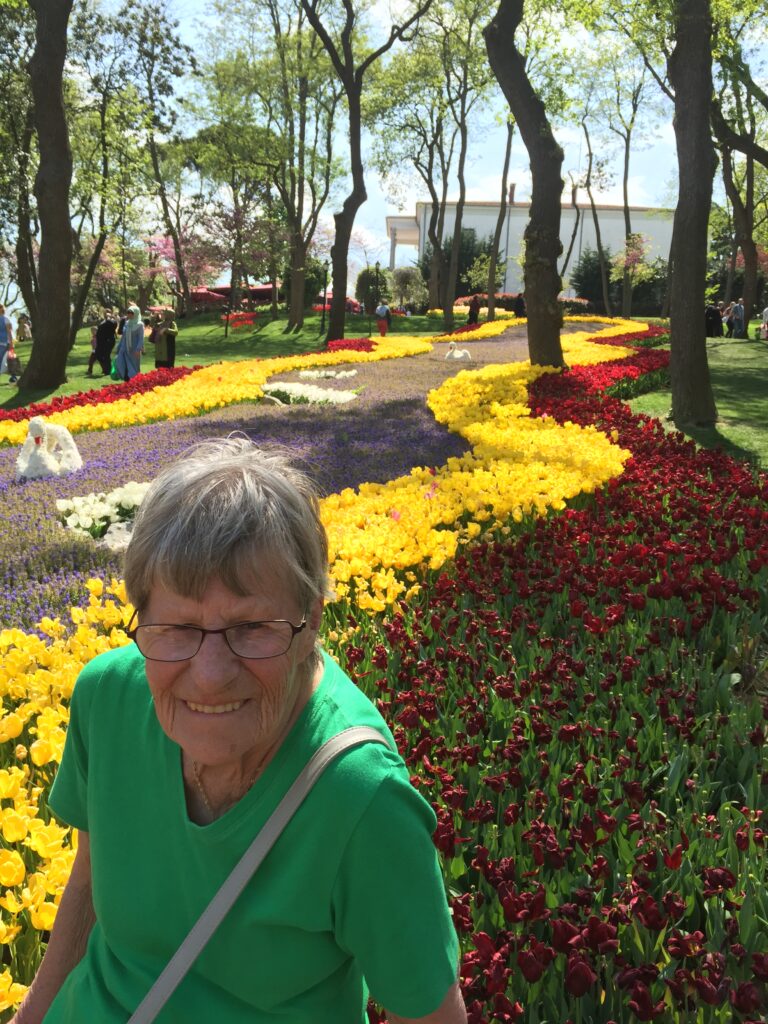
The daffodils in the ravine behind my garden gate are laughing at me. Taunting me. Tormenting me.
These are the bulbs that I didn’t plant two autumns ago because I wouldn’t be here in the spring. They are the bulbs that I did plant last fall even though I wouldn’t be here to see them this spring.
But here I am, and there they are. Their nodding yellow heads are joined by a small plucky forsythia bush that I planted almost four years ago, and which the rabbits almost killed the first winter. Since then, it, and the other flowering shrubs I lovingly planted that first fall in this house, have been lovingly wrapped in chicken wire to keep them safe. Finally, this year, they’ll be the size they should have been their first spring here. At least they made it.
And despite all my hopes, I’m here to see it.
I suppose their appearance should make me happy. Winter is over, and bright colours are starting to return to our landscapes, And at least they’re not tulips. When the tulips start to flower, I might have a temper tantrum worthy of a two-year-old.
Five years ago today, I landed at Atatürk International Airport with my mother. We were in Turkey to see the tulips. Most people think tulips come from Holland. Especially in Canada, where we’ve received an annual gift of tens of thousands of tulip bulbs from the Dutch royal family (Canada sheltered the family during World War II and even declared the maternity ward of an Ottawa hospital to be extraterritorial, to allow the birth of Princess Margriet, who was born there, to be solely influenced by her mother’s Dutch citizenship) tulips and Holland are intimately linked.
But tulips are native to central Asia and Turkey. They were introduced to Holland in the 16th century by the Ottomans, and a hundred or so years later, the world went mad for them and Tulipmania saw the world’s first major financial bubble when tulip prices skyrocketed. In fact, tulip motifs are everywhere in Turkey – its symbology is important enough to have been featured in tile and fabric design for centuries. Lale (Turkish for tulip) is a popular girl’s name and in today’s modern Istanbul, you see tulip motifs regularly.
Since 2006, Istanbul has been home to a city-wide Tulip Festival featuring millions of tulips. IN recent years, the number planted has been estimated at 30 million. So my Mum and I traipsed all over Istanbul taking in the blooms. We saw tulips in the historic peninsula, especially in Gülhane Park, behind the historic Topkapı Palace (which featured its own tulip beds throughout the grounds). We saw tulips in Yıldız Park in Beşiktaş, where a friend lives. We took a ferry up the Bosphorus to see amazing tulip displays at Emirgan Park and even went to a tulip museum.

Of course it wasn’t just tulips. The redbud trees were in full bloom, and other spring flowers provided relief for the eyes from constant tulips. In Emirgan Park, there’s a display where a “river” composed entirely of grape hyacinths, and floating white tulip swans. They were over their best when we were there, but you could imagine how glorious it would have been just a few days earlier.
But back to the daffodils. Their emergence reminds me that my sabbatical is only going to check off some of the boxes I’d hoped it would. By now, I should be somewhere else. Not here. But the world has not righted itself as quickly as we’d hoped and still has a way to go. I realize it’s very much a “first world problem” and I won’t complain too much. With luck, the new stay at home order in Ontario will help, and I hope my region will lower its vaccination age in the next week or possibly two. Even from home, I have a beautiful view to inspire me, and writing can happen – and is happening – from anywhere. And I still have a couple of weeks to ready myself for my first tulip to bloom. Chocolate and red wine are still on the essential list, right!?



Enjoy those daffodils Katherine. I think another name for grape hyacinths is Muscari. Glad you are writing, and although different from the view you expected in Turkey, your back garden looks lovely.